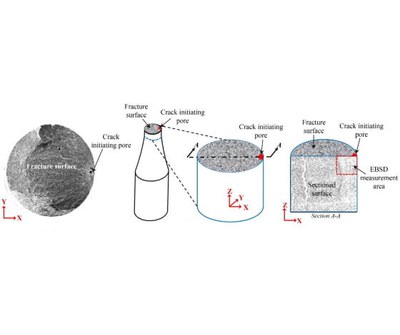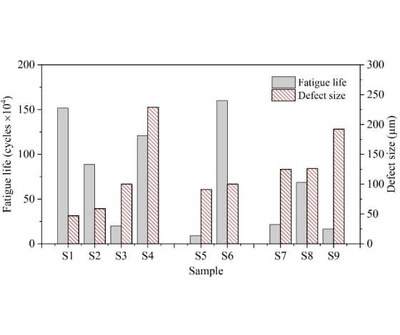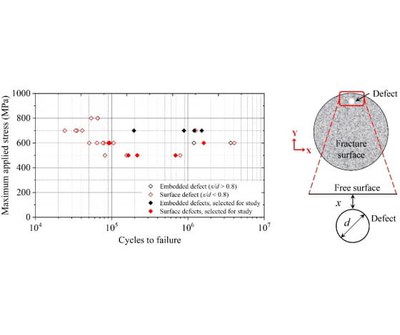


Effect of crystallographic orientation of Ti-6Al-4V
Titanium alloys such as Ti-6Al-4V built by most of the additive manufacturing processes are known to contain process induced defects, non-conventional microstructure and strong crystallographic texture; all of which can affect the fatigue strength. In this study we evaluated the effect of crystallographic orientation of α and α lath width around gas pore defects on the high cycle fatigue life of Wire + Arc Additive Manufactured Ti-6Al-4V by means of Electron Back Scattered Diffraction. Here we show that variations in crystallographic orientation of α lath and its width in the vicinity of the crack initiating defect were the main reasons for the considerable scatter in fatigue life. Pyramidal slip systems with high Schmid factor active around the defects resulted in longer fatigue life compared to pyramidal slip with lower Schmid factor. In the absence of pyramidal slip, cracks initiated from active prismatic slip systems. When considering the influence of the microstructure, a higher number of smaller α laths around the defect resulted in longer fatigue life, and vice versa. Overall, the fatigue crack initiation stage was controlled collectively by the complex interaction of porosity characteristics, α lath width and its crystallographic orientation at the crack initiation location.
Shamir, A. K. Syed, V. Janik, R. Biswal, and X. Zhang, “The role of microstructure and local crystallographic orientation near porosity defects on the high cycle fatigue life of an additive manufactured Ti-6Al-4V,” Mater. Charact., 2020, doi: 10.1016/j.matchar.2020.110576.
Information
- Research Area:Material Performance
- Publication date:02 February 2020
-
Investigators:
Abdul Khadar Syed
, Xiang Zhang, Romali Biswal - Publications:https://doi.org/10.1016/j.matchar.2020.110576
